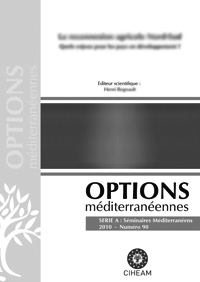| Article précédent | p. 239-242 | Article suivant |
Impact of silage making on evolution of livestock production systems in the Bour coastal areas of Morocco
The work aimed to gather information about silage making and its impact on livestock. Cattle and sheep farmers were questioned and samples were taken from all silos. 80 percent of cattle herds are pure breeds. 63 percent of sheep producers work with crossbreeding programs. Crop production is based on cereal and forage. Land set for forage is 18.5 percent. Silage experience of farmers is diverse. Silage is used in periods of shortage of forage, being the basic feed in the lambing period and stabilizing milk production throughout the year. It is the second energy source after concentrates. Silage composition is 74 percent oat, 15 percent barley and 10 percent triticale. Crude protein content is low. Average energy yield is 4900 FU per ha. Most samples have high butyric acid content. Silage allows the intensification of livestock production. There is a wide variation in silage quality between the areas. Extension approaches should be reviewed.
- [ Afficher ]
- [ Télécharger ]
- [ Exporter la citation ]
Vous pouvez télécharger la citation au format :
- [ Imprimer ]
-
Mots-clés
BETAIL, ENSILAGE (PRODUIT), MAROC, PRODUCTION ANIMALECiter cet article
El Housni A., Ter Meulen U., Thinggaard G., El Himdy B. Impact of silage making on evolution of livestock production systems in the Bour coastal areas of Morocco. In : Ben Salem H. (ed.), Nefzaoui A. (ed.), Morand-Fehr P. (ed.). Nutrition and feeding strategies of sheep and goats under harsh climates . Zaragoza : CIHEAM, 2004. p. 239-242. (Options Méditerranéennes : Série A. Séminaires Méditerranéens; n. 59). 9. Seminar of the Sub-Network on Nutrition of the FAO-CIHEAM Inter-Regional Cooperative Research and Development Network on Sheep and Goats, 2001/11/08-10, Hammamet (Tunisia). http://om.ciheam.org/om/pdf/a59/04600035.pdf



